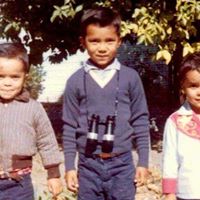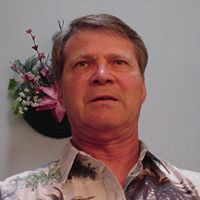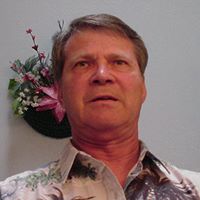Richard D Anglin
age ~59
from Yuma, AZ
- Also known as:
-
- Richard D Angoin
- Richard Danglin
- Phone and address:
-
7456 25Th St, Yuma, AZ 85365
9283452686
Richard Anglin Phones & Addresses
- 7456 25Th St, Yuma, AZ 85365 • 9283452686
- 9704 Halberns Blvd, Santee, CA 92071
- 1600 W 12Th St APT 1511, Yuma, AZ 85364 • 9283427078
Work
-
Position:Installation, Maintenance, and Repair Occupations
Education
-
Degree:High school graduate or higher
Resumes

Richard Anglin
view sourceLocation:
United States
Name / Title
Company / Classification
Phones & Addresses
ANGLIN COLLISION REPAIR, LLC
ANGLIN FAMILY LIMITED PARTERSHIP
Owner
Channel Group
Telecommunication Consultant
Telecommunication Consultant
3558 Voyager Cir, San Diego, CA 92130
PO Box 2229, Del Mar, CA 92014
8582592080
PO Box 2229, Del Mar, CA 92014
8582592080
President
RADIO, DIGITAL TECHNIQUE, INC
Commercial Nonphysical Research
Commercial Nonphysical Research
3558 Voyager Cir, San Diego, CA 92130
8582592080
8582592080
Managing
International Data Forwarders, LLC
Telecommunications Services
Telecommunications Services
3558 Voyager Cir, San Diego, CA 92130
Managing
Access International Communications, LLC
Telecommunications Services
Telecommunications Services
3558 Voyager Cir, San Diego, CA 92130
Managing
Mountain Light Technology, LLC
Search and Rescue
Search and Rescue
3558 Voyager Cir, San Diego, CA 92130
Us Patents
-
Chirp Waveform Decoding System
view source -
US Patent:20040022299, Feb 5, 2004
-
Filed:Aug 1, 2003
-
Appl. No.:10/633147
-
Inventors:Richard Anglin - Del Mar CA, US
-
International Classification:H04K001/00
-
US Classification:375/139000
-
Abstract:Methods and apparatus for detecting a transmission of digital radio frequency chirps are disclosed. A series of digital chirps, which are emitted from a remote transmitter, are received by an antenna and then fed into an RF receiver. In one preferred embodiment of the invention, noise is extracted from the received RF chirp waveform using a Kalman filter. Useful information is then extracted from the received RF chirp waveform using one of several novel detection methods.
-
Chirping Digital Wireless System
view source -
US Patent:20050018752, Jan 27, 2005
-
Filed:Jun 2, 2004
-
Appl. No.:10/860514
-
Inventors:Richard Anglin - Del Mar CA, US
-
International Classification:H04B001/69
-
US Classification:375139000
-
Abstract:The present invention includes a chirp transmission means for generating and emanating chirps. In general, a chirp is a pulse, waveform or propagated signal which may be characterized by a mathematical function. In one embodiment, the mathematical function comprises a relationship between frequency and time. The invention also includes a chirp reception means for receiving chirps without the need for tuning to a carrier waveform. The reception means is capable of extracting digital data from the received chirps. In alternative embodiments of the invention, the chirps may convey voice, video or other signals.
-
Interactive Digital Data Broadcasting System
view source -
US Patent:20060023656, Feb 2, 2006
-
Filed:Jul 29, 2004
-
Appl. No.:10/909110
-
Inventors:Richard Anglin - Del Mar CA, US
-
International Classification:H04Q 7/00
-
US Classification:370328000
-
Abstract:An Interactive Digital Data Broadcasting System comprises a plurality of digital data broadcasting transmitter systems () is disclosed. In a preferred embodiment, the transmitter () operate in the frequency bands 2,310-2,320 and 2,345-2,360 MHz (S-band), 902-928 MHz, 2,400-2,483.5 MHz or 5,725-5,825 MHz. The present invention also includes user terminal () capable of receiving a plurality of channels in the said frequency bands and capable of transmitting in one or more traditional wireless communications bands; a plurality of receiving systems () for transmission from a user terminal (); and a network management center (). A user terminal () comprises an antenna system () capable of receiving multiple channels of broadband data broadcast transmissions in said frequency bands 2,310-2,320 and 2,345-2,360 MHz, 902-928 MHz, 2,400-2,483.5 MHz or 5,725-5,825 MHz () and transmitting on any traditional wireless communications technology () or via the transmitted band; a receiver (); digital signal processing (); a user interface (); a transmitter operating in a traditional wireless communications system band (); and a software operating system () to control the functions of the user terminal ().
-
Video Communication System
view source -
US Patent:20060265729, Nov 23, 2006
-
Filed:May 12, 2006
-
Appl. No.:11/433921
-
Inventors:Richard Anglin - Del Mar CA, US
-
International Classification:H04N 7/173
-
US Classification:725105000
-
Abstract:The present invention comprises a central network transceiver () which both transmits and receives wireless radio signals. The central network transceiver () emits a broadcast or “point-to-multipoint” signal () which is received by many users or customers () which are located remotely from the central network transceiver (). Customers () view video content using a personal computer, a modified television that includes a video camera (), or some other video terminal or appliance ().
-
Content Selection And Retrieval System
view source -
US Patent:20070011703, Jan 11, 2007
-
Filed:Jul 5, 2005
-
Appl. No.:11/176006
-
Inventors:Richard Anglin - Del Mar CA, US
-
International Classification:H04N 7/10
G06F 3/00
G06F 13/00
H04N 7/025
H04N 5/445 -
US Classification:725046000, 725034000, 725035000
-
Abstract:The present invention comprises methods and apparatus for providing more content choices to consumers () independent of their geography. In one embodiment of the invention, a consumer () uses a content terminal () to enjoy and audio and/or video content based on a customized set of content preferences (). The present invention retrieves this preferred content utilizing a wired or wireless Internet connection (), irrespective of the location of the user (). In one embodiment of the invention, the content terminal () is a personal computer, cell phone, portable television or some other appropriate content replication appliance.
-
Content Exchange System
view source -
US Patent:20070011704, Jan 11, 2007
-
Filed:Dec 23, 2005
-
Appl. No.:11/318427
-
Inventors:Richard Anglin - Del Mar CA, US
-
International Classification:H04N 7/025
H04N 7/10
G06F 3/00
H04N 5/445
G06F 13/00 -
US Classification:725046000, 725034000, 725035000
-
Abstract:The present invention comprises methods and apparatus for providing more content choices to a user () independent of their geography. In one embodiment of the invention, a user () utilizes a content terminal () to enjoy and audio and/or video content based on a customized set of content preferences (). The present invention retrieves digital files utilizing a wired or wireless Internet connection over a network (), irrespective of the location of the user (). In one embodiment of the invention, the content terminal () is a personal computer, cell phone, portable television or some other appropriate content replication appliance. Users () may search for and obtain content selections () by accessing a website which displays a library of content in the form of an easy-to-use graphical interface.
-
Digital Radio System
view source -
US Patent:20070165697, Jul 19, 2007
-
Filed:Jan 18, 2006
-
Appl. No.:11/335913
-
Inventors:Richard Anglin - Del Mar CA, US
-
International Classification:H04B 1/00
-
US Classification:375139000
-
Abstract:Methods and apparatus for digital communications are disclosed. In one embodiment of the invention, chirp waveforms () are used to convey meanings of “one” and “zero.”
-
Remote Diagnostic & Treatment System
view source -
US Patent:20070255115, Nov 1, 2007
-
Filed:Apr 27, 2006
-
Appl. No.:11/414746
-
Inventors:Richard Anglin - Del Mar CA, US
Bradley Tipler - San Diego CA, US -
International Classification:A61B 5/00
-
US Classification:600300000
-
Abstract:Methods and apparatus for providing remote diagnosis and treatment are disclosed. One embodiment of the invention comprises a cellular telephone (A) that includes a camera (), a display (), a speaker (A), a microphone (B) and embedded diagnostic and treatment software (). An alternative embodiment may also include one or more data devices () that may be connected to the cellular phone (A) using a wireless (A) or wired (B) connection.
Lawyers & Attorneys

Richard L. Anglin, Jr., Del Mar CA - Lawyer
view sourceOffice:
P.o. Box 2229, Del Mar, CA
ISLN:
909415622
Admitted:
1981
University:
Case Western Reserve University, B.S.C.E.
Law School:
Loyola Marymount University, J.D.
Googleplus

Richard Anglin

Richard Anglin
Plaxo

Richard Anglin
view sourceFontana, WI
Youtube
Classmates

Richard Anglin
view sourceSchools:
McCallie High School Chattanooga TN 1956-1960
Community:
John Seay, Frank Durand, Jeff Hubbs

Richard Anglin
view sourceSchools:
Hill Country Christian School San Marcos TX 1997-1998
Community:
Gillian Laura, Homa Hill, Charlene Mcclelland

Richard Anglin
view sourceSchools:
Three Lakes High School Three Lakes WI 1973-1977
Community:
Bonnie Greenman, Doris Hyson, Leda Ehlenfeldt

Richard Anglin
view sourceSchools:
West Shore Joint High School Lemoyne PA 1951-1955
Community:
Ed Kramer, David Lehmer

Richard Anglin
view sourceSchools:
Faulkton High School Faulkton SD 1959-1963
Community:
Mario Marker, Roger Weyand, Leland Winters, Roger Wahlen, Greg Schaefer, Pat Witte, Gerald Jerry, James Sherman, Carol Beadle, Barb Benning, Richard Anglin

Richard Anglin
view sourceSchools:
All Hallows Grammar School Bronx NY 1968-1972
Community:
Timothy Blumberg, Robert Solanto, William Russo, Ronald Rickwell, Bruce Kaalund, Mike Iaccarino, Allen Grants, Sean Flanagan, Timothy Indiveri, Carl Piscitello, Kathleen Digiacomo, Danial Trend

Richard Anglin
view sourceSchools:
Gracemont High School Gracemont OK 1964-1968
Community:
Gayle Sage, Harold Bowman, Pete Goucher, Verna Greer, Pauline Bare, Billy Wells, Ron Askins, Ron Mccathern, Richard Lemmon, Rod Brooks, Reggie Dungan, Glenda Askins

Richard Anglin
view source
Richard Anglin
view source
Richard Anglin
view source
Richard Anglin
view source
Richard Anglin
view source
Richard R. Anglin
view source
Richard Anglin
view source
Richard Anglin
view sourceFlickr
Myspace
Get Report for Richard D Anglin from Yuma, AZ, age ~59











